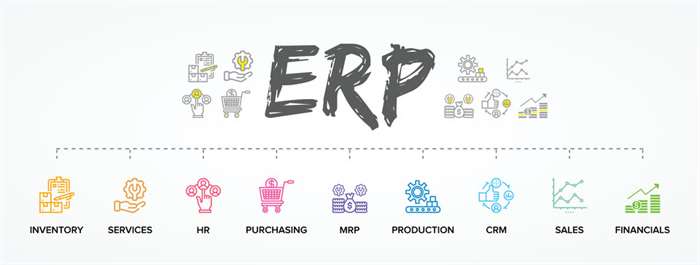Now, one may wonder that if the size of all the pointers is the same, then why do we need to declare the pointer type in the declaration? The type declaration is needed in the pointer for dereferencing and pointer arithmetic purposes. In constant pointers, the memory address stored inside the pointer is constant and cannot be modified once it is defined. In C language, we can define a pointer that stores the memory address of another pointer. Such pointers are called double-pointers or pointers-to-pointer.
It becomes very easy to analyze the program while using pointers. It can easily handle various tasks which can’t be executed using simple programming such as dynamic memory allocation. The variable that stores the address of another variable is what in C++ is called a pointer. Pointers are a very powerful feature of the language that has many uses in lower level programming. A bit later, we will see how to declare and use pointers. When setting up data structures like lists, queues and trees, it is necessary to have pointers to help manage how the structure is implemented and controlled.
Get the Value from the Address Using Pointers
In computer science, a pointer is a kind of reference. One good way to visualize what is happening is to draw a picture. After i, j and p are declared, the world https://globalcloudteam.com/ looks like the image above. A human resources generalist is an HR professional who handles the daily responsibilities of talent management, employee …

It will depend on the compute environment and how function calls are carried out. Regardless of the approach, the stack pointer is always located at the top of the stack, providing a reliable starting point for accessing stack memory. We know that an array is a collection of similar data type element. The elements in an array are stored at a contiguous memory location. The base address of an array is the address of the 0th element of the array.
stack pointer
Pointers are used to store and manage the addresses of dynamically allocated blocks of memory. Such blocks are used to store data objects or arrays of objects. Most structured and object-oriented languages provide an area of memory, called the heap or free store, from which objects are dynamically allocated. When dealing with arrays, the critical lookup operation typically involves a stage called address calculation which involves constructing a pointer to the desired data element in the array.

Dereferencing a null pointer in C produces undefined behavior, which could be catastrophic. However, most implementations simply halt execution of the program in question, usually with a segmentation fault. If you require a construct of this kind, you have to first copy the input value to a variable with write access. Because a pointer holds an address rather than a value, it has two parts. This fact can be a little confusing until you get comfortable with it, but once you get comfortable it becomes extremely powerful.
Example 3: Changing Value Pointed by Pointers
A pointer that is not assigned any value but NULL is known as the NULL pointer. If you don’t have any address to be specified in the pointer at the time of declaration, you can assign NULL value. In c language, we can dynamically allocate memory using malloc() and calloc() functions where the pointer is used. Create a pointer variable with the name ptr, that points to an int variable . Note that the type of the pointer has to match the type of the variable you’re working with . Some extended versions of COBOL also provide PROCEDURE-POINTER variables, which are capable of storing the addresses of executable code.
- In the above image, the base address of the array is 1000.
- Generally, C++ programs do not actively decide the exact memory addresses where its variables are stored.
- They can be created by assigning a NULL value to the pointer.
- Nil is the empty list, and Cons a is a cons cell of type a with another link also of type a.
- To print the value of this pointer, you need to typecast it.
A pointer is nothing but a memory location where data is stored. Pointers are used to form complex data structures such as linked list, graph, tree, etc. We can create a null pointer by assigning null value during the pointer declaration. This method is useful when you do not have any address assigned to the pointer. The address of operator ‘&’ returns the address of a variable.
C Array
All pointers are by default initialized to null, and any attempt to access data through a null pointer causes an exception to be raised. If necessary, to completely avoid buffer overflow problems, bounds checking can usually be actioned for the compiler . When you use the index access with a variable of the type WSTRING, you get the character at the offset of the index expression.

Instead of pointing to a data value, they point to another pointer. The pointer pointing to the structure type is called Structure Pointer or Pointer to Structure. It can be declared in the same way as we declare the other primitive data types. In most of the operating systems, programs are not permitted to access memory at address 0 because that memory is reserved by the operating system.
Use in data structures
A pointer value may be assigned to another pointer of the same type. This concept is not limited to the one-dimensional array, we can refer to a multidimensional array element as well using pointers. As we can see, no matter what the type of pointer it is, the size of each and every pointer is the same. As the name suggests, these are the pointers that point to the integer values. Here, we have declared a pointer pointVar of the int type. Notice that the first address differs from the second by 4 bytes and the second address differs from the third by 4 bytes.
The Top C++ Security Vulnerabilities and How to Mitigate Them – Security Boulevard
The Top C++ Security Vulnerabilities and How to Mitigate Them.
Posted: Thu, 27 Apr 2023 07:00:00 GMT [source]
It may lead to a memory leak because dynamically allocated blocks need to be explicitly freed. Let’s see some of the advantages of using pointers in C programming. Here, you can access func_calls and call inc_func_calls() in various places in your applications and simulate pointers in Python. This is useful when you have something like metrics that need to be used and updated frequently in various parts of your applications.
The most important point in pointers.
This allocates a block of five integers and names the block array, which acts as a pointer to the block. Another common use of pointers is to point to dynamically allocated memory from malloc which returns a consecutive block of memory of no less than the requested size that can be used as an array. Relative addresses are a form of manual What is pointer memory segmentation, and share many of its advantages and disadvantages. A two-byte offset, containing a 16-bit, unsigned integer, can be used to provide relative addressing for up to 64 KiB of a data structure. Generally, though, such schemes are a lot of trouble, and for convenience to the programmer absolute addresses is preferred.












